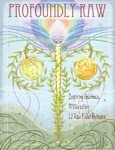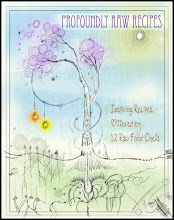In recent years, a number of lovely low–glycemic raw food sweeteners have appeared on the market, which can be wonderful additions to any healthy eating plan. However, many people feel unsure how to use these delectable ingredients. In this article, you can find out the ‘skinny’ on delicious foods such as lucuma, mesquite, yacon, carob and stevia PLUS how to use them in raw food recipes :)
Lucuma
Lúcuma (Pouteria obovata) is a Peruvian sub–tropical fruit that is usually found in raw food 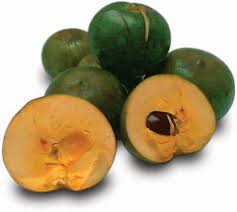 stores as a powder, made from the dried fruits. This yellow–gold, rich powder is actually my FAVOURITE of the lower–glycemic sweet raw powders, as it has a unique, delicious taste – something similar to shortbread or caramel.
stores as a powder, made from the dried fruits. This yellow–gold, rich powder is actually my FAVOURITE of the lower–glycemic sweet raw powders, as it has a unique, delicious taste – something similar to shortbread or caramel.
Lucuma used to be called ‘The Gold of the Incas’ and is said to be the most popular flavour for ice cream in Peru where it natively grows ;) Lucuma is related to mamey, green sapote and canistel (egg fruit) and is an excellent source of carbohydrates, fiber, beta–carotene, B vitamins and iron.
Yacon
Yacón (Smallanthus sonchifolius) is a root vegetable, also native to Peru, in the Andes. Yacon can be found in many forms in raw food stores – syrup, powder, dried slices. It is often called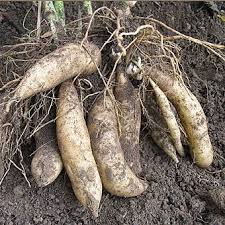 the ‘apple of the earth’ and is related to the sunflower and Jerusalem artichoke. The syrup is very thick, dark and sweet while the dried slices taste a bit like dried pineapple slices and make great snack food, or trail mix additions.
the ‘apple of the earth’ and is related to the sunflower and Jerusalem artichoke. The syrup is very thick, dark and sweet while the dried slices taste a bit like dried pineapple slices and make great snack food, or trail mix additions.
Yacon is actually said to be ‘no glycemic’ as the sugars it contains (inulin/fructooligosacaride (FOS)) cannot be absorbed by the human body, which makes this a low–calorie product popular with diabetics and those with other sugar–related issues such as candida. Yacon is reputed to be a pre–biotic and a pro–biotic, meaning it supports the beneficial bacteria in the intestines. It is also rich in fiber, potassium and antioxidants.
Mesquite
Mesquite powder is made by grinding the seed pods of the mesquite tree (Prosopis spp. – also known as algorroba) – a leguminous plant found in arid/desert areas worldwide. This golden powder has a distinctive, sweet, almost nutty taste.
Mesquite powder is high in protein, lysine, calcium, magnesium, potassium, iron, zinc, and dietary fiber. Mesquite is another sweetener recommended for diabetics or those interested in balancing blood sugars.
Carob Powder
Carob powder is also made by grinding seed pods – this time, the pods from the carob tree (Ceratonia siliqua). Carob is another leguminous tree, native to the Mediterranean – it also grows well in California and Florida.
Carob has long been appreciated as a non–stimulating alternative to chocolate. The silky–fine carob powder from Italy that we sell is the richest, most chocolaty carob powder I’ve ever tried. Look out too for dried whole carob bean pods.
Carob is not particularly sweet by itself, however, combined with any of the other sweeteners mentioned here, you can create delicious chocolate replacements. Carob is said to be rich in calcium, phosphorus, magnesium, B Vitamins, Vitamin A, protein and fibre and is also traditionally used to relieve diarrhea in infants.
Stevia
The herb stevia (Stevia rebaudiana) is part of the sunflower family, native to South and Central America. It is very popular with diabetics as it doesn’t raise blood sugar levels and is a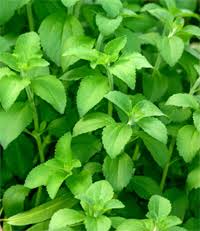 lmost calorie–free.
lmost calorie–free.
Stevia can be obtained in different forms, from the whole leaves, to crushed leaves, powders, liquid extracts and so on. It is intensely sweet and only a very small amount is required in recipes (it’s easy to accidentally use too much stevia and alter the taste of meals, so add it in small amounts to begin with ;)
Stevia is said to contain calcium, iron, magnesium and zinc, though it is usually used in such tiny amounts that the nutritional benefits might be minimal... It’s used more as an easy way to add a lot of sweetness without adding more calories/bulk to a dish.
Other Sweet Treats
Goji Powder/Goji Berries
Goji berries (Lycium barbarum) have become very popular in recent years as a hea lthy sweet ‘superfood’. They are part of the nightshade family. Dried whole goji berries are very widely available, along with goji berry powder. I LOVE the goji berry powder and feel it is best eaten straight from the packet ;) It can be used in smoothies, puddings, cakes and so on too though. Gojis are said to be rich in protein/amino acids, B Vitamins, beta carotene and minerals like calcium, iron, potassium and zinc.
lthy sweet ‘superfood’. They are part of the nightshade family. Dried whole goji berries are very widely available, along with goji berry powder. I LOVE the goji berry powder and feel it is best eaten straight from the packet ;) It can be used in smoothies, puddings, cakes and so on too though. Gojis are said to be rich in protein/amino acids, B Vitamins, beta carotene and minerals like calcium, iron, potassium and zinc.
Pomegranate
Pomegranate fruits (Punica granatum) are native to the Middle East and are now g rown all over the world. Pomegranates are a medium–glycemic, delicious fresh fruit and it is also possible to get dried, concentrated pomegranate powder and dried whole pomegranate seeds. The pomegranate powder is bright pink and tastes a bit like sherbet ;) It’s nice used in smoothies, cakes and puddings. The dried whole pomegranate seeds can be used like any other dried fruit, though they are much more ‘tart’ in flavour than something like dates/apricots. Pomegranates are said to be rich in B vitamins, Vitamin C, iron and potassium.
rown all over the world. Pomegranates are a medium–glycemic, delicious fresh fruit and it is also possible to get dried, concentrated pomegranate powder and dried whole pomegranate seeds. The pomegranate powder is bright pink and tastes a bit like sherbet ;) It’s nice used in smoothies, cakes and puddings. The dried whole pomegranate seeds can be used like any other dried fruit, though they are much more ‘tart’ in flavour than something like dates/apricots. Pomegranates are said to be rich in B vitamins, Vitamin C, iron and potassium.
Hemp Protein 50%
Industrial hemp (Cannabis sativa L.) is a plant with many uses, from food to clothing,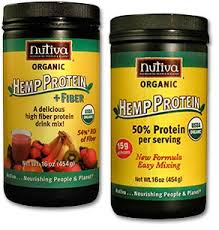 fuel, paper, cosmetics and more. Hemp powder 50% is a powdered hemp product made by Nutiva that contains less fibre and more protein – 50% protein. It is sweeter than most hemp powders because there is less fibre. While this powder is not super–sweet by itself, it is certainly a unique, nutrient–packed ingredient for sweet raw dishes. Hemp is rich in essential fats, protein, vitamin E and iron.
fuel, paper, cosmetics and more. Hemp powder 50% is a powdered hemp product made by Nutiva that contains less fibre and more protein – 50% protein. It is sweeter than most hemp powders because there is less fibre. While this powder is not super–sweet by itself, it is certainly a unique, nutrient–packed ingredient for sweet raw dishes. Hemp is rich in essential fats, protein, vitamin E and iron.
Coconut
Coconut (Cocos nucifera) is an awe–inspiring plant with myriad uses. As a food it is available in many raw forms such as coconut flour, oil, butter, chips, shreds or simply fresh coconut  water/meat. Coconut is naturally a little sweet.
water/meat. Coconut is naturally a little sweet.
Coconut water is a rich source of electrolytes and in general coconut offers healthy fats, iron, zinc phosphorus and some B vitamins, among other things.
I love using coconut butter, flour or fresh coco water/meat in sweet meals, plus adding coconut chips to soups for a tasty, chewy garnish ;) My absolute favourite use of coconuts though is drinking the sweet, fresh coco water – YummmMmMmmmm...
Nuts & Seeds
Some nuts/seeds and their butters have a natural sweetness to them, which can make them ideal choices in recipes like cakes, cookies, grawnolas etc. I find almonds naturally a little sweet for example, along with macadamias, hemp seeds, pine nut butter and hazelnut butter.
Bee Pollen
While different bee pollens can differ vastly in their taste, colour and texture, they are usually naturally at least a little sweet. The best bee pollen I’ve ever tasted was from a little bee–keeper in New Orleans somewhere and the pollen actually tasted like chocolate ;O I don ’t know what those bees had been picking up but it was a gorgeous concoction.
’t know what those bees had been picking up but it was a gorgeous concoction.
Bee pollen is a nutrition treasure–trove – proteins, amino acids, folic acid, B vitamins, trace minerals, vitamins E and K and much more...
I like to just eat bee pollen by itself usually. We have a gorgeous sweet pollen in our store that I eat regularly. One of my favourite ways to eat pollen is to simply mix together pollen with shelled hemp seeds as a nutrient–packed ‘trail mix’ or snack.
(Warning: some people can get allergic reactions to bee products/pollen – always try a small amount at first.)
Honourable Mentions:
Cinnamon
Cinnamon (Cinnamomum verum) is a spice made from the cinnamon tree. Cinnamon is naturally a little sweet, plus warming and pungent.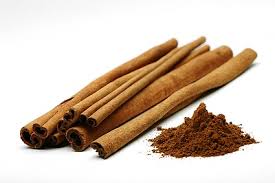
Cinnamon ‘quills’ are made by stripping bark from cinnamon trees and drying it. The dried bark is then commonly made into a powder.
Cinnamon is said to have a high level of antioxidants, manganese, iron, calcium and there are also reports that it can be useful in treating diabetes/blood sugar imbalances.
Vanilla
Vanilla (Vanilla spp.) is an exotic, pungent spice derived from the seed pods of orchids. Vanilla is available in different forms like whole vanilla pods, vanilla powder, liquid forms and so o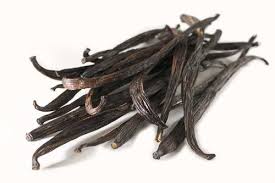 n. We have an incredible vanilla powder for sale, along with whole beans.
n. We have an incredible vanilla powder for sale, along with whole beans.
While vanilla is not particularly sweet by itself, it makes a lovely addition to many sweet raw dishes. Vanilla is well–known as an aphrodisiac and is also said to be a great aromatherapy scent to help handle food cravings.
Maca
Maca (Lepidium meyenii) is a root vegetable native to the Peruvian Andes. Maca is not particularly sweet by itself, yet is quite often used in sweet raw dishes as a ‘superfoo d’ addition. Maca is most commonly found in powdered form and is usually a creamy colour, though red and black maca powders are also available (green and purple roots also grow ;)
d’ addition. Maca is most commonly found in powdered form and is usually a creamy colour, though red and black maca powders are also available (green and purple roots also grow ;)
Maca is renowned as an energy–enhancer, aphrodisiac, adaptogen, hormone balancer and nutrient powerhouse. It is rich in minerals like selenium, calcium, magnesium, iron, plus protein, fatty acids and amino acids.
CamuCamu Powder
Camu berries grow on small, wild trees (Myrciaria dubia) from the Amazon rainfores t of Peru/S. America. Camu powder, made from the dried berries, can be purchased from raw food suppliers. It is usually pink in colour, a little sweet and very ‘zingy’, a bit like sherbet ;) It is reputed to contain the highest amount of Vitamin C of any food, along with flavenoids, calcium, iron and amino acids.
t of Peru/S. America. Camu powder, made from the dried berries, can be purchased from raw food suppliers. It is usually pink in colour, a little sweet and very ‘zingy’, a bit like sherbet ;) It is reputed to contain the highest amount of Vitamin C of any food, along with flavenoids, calcium, iron and amino acids.
Camu by itself is a bit more ‘zingy’ than sweet – it can be used to add ‘zing’ to sweet dishes though ;) I usually just take it by itself as a powerful, bioavailable vitamin C supplement.
Fresh Low Glycemic Foods:
If you’d prefer to have some fresh low glycemic sweet treats, here’s a list of yummy possibilities:
*berries (raspberries, blackberries, strawberries, blueberries, cranberries etc.)
*limes/lemons
*fresh cherries
*grapefruit
*non–sweet ‘fruits’ like bell peppers, tomatoes, cucumbers, okra
*fresh corn
*rhubarb
*edible flowers and blossoms, such as mallow, borage, fuchsia, hibiscus, jasmine and squash blossoms.
Recipes
You can create untold sweet wonders using different combinations of the above ingredients ;) For a little inspiration to get you started, here are eight recipes that use a variety of the foods mentioned above:
*Almond Dreambars
Watch HERE to see how to make these dreeeaaaammmmy smooth treats ;)
Ingredients: almond butter (or any nut/seed butter), coconut oil,  lucuma, goji berries
lucuma, goji berries
*Hemp Milk
Click HERE to watch my demo of how to make a sweet, yummy hemp milk drink.
Ingredients: hemp seed (butter), cinnamon, cardamom, sweetener such as lucuma/yacon/stevia/dried fruit. Optional: maca, whole goji berries to float in milk ;)
*Yumballs
Visit HERE to learn how to create some delicious goji berry ‘yumballs’ for sweet treats from the fridge ;)
Ingredients: goji berries, nut/seed butter, yacon/lucuma powder. Optional: hemp protein 50%, stevia, cinnamon, maca
*Yumpots
One of my favourite, quick ways to make smthg sweet, raw and delectable is to simply mix up a few of the ingredients mentioned above, by hand, in a little bowl. I call these ‘yumpots’ and the variations are endless – here’s an example, to serve one:
1 tbsp hempseed butter
1 tbsp carob powder
1 tbsp yacon powder
big pinch cinnamon powder
water to thin to desired consistency
optional: 1 tbsp goji berries to stir in for chewability
Simply put all the ingredients into a little bowl, mix together by hand and ENJOY :)
*Truffles
Sweet raw truffles can easily be made up in batches and kept in the fridge or freezer for instant sweet satisfaction as and when desired ;) Again, the possibilities are endless, here is a basic example recipe to start with:
3–5 tbsp (to taste) of powdered sweetener of your choice – e.g. lucuma, yacon, mesquite powders (NOT stevia in these quantities ;)
3 tbsp almond butter OR 1 cup soaked nuts of your choice, e.g. walnuts, hazelnuts, a lmonds, pecans
lmonds, pecans
½ cup carob powder
Liquid to combine – e.g. water, nut/seed milk, fresh coconut water – to desired consistency
Combine everything in a food blender/processor until all bound together in a big sticky lump. Divide out into small balls and chill in fridge or freezer. Can be rolled in powder (e.g. hemp protein 50%) or shredded coconut, decorated with gojis and so on – use your creativity ;) Add different things like coconut oil/butter, vanilla, cinnamon, bee pollen, a couple of drops of orange/peppermint oil, maca, camucamu powder etc for different tastes and effects.
*Satisfying Smoothies
Again, the possibilities for sweet, low–glycemic, satisfying smoothies are endless. Here’s an example recipe to get you started (for one person):
2 cups nut/seed milk (see hemp milk recipe above to see how to make nut/seed milk if unsure) OR the water and meat from a young coconut
2 tbsp lucuma powder
½ tsp maca powder
pinch of stevia
big pinch of cinnamon powder
Blend all of the ingredients together in a blender and enjoy :) As elsewhere, try different ingredients/combos to your taste – e.g. add goji or pomegranate powder, hemp protein 50% powder, sprinkle with bee pollen or go chocolate–y with a heaping tablespoon of raw carob powder ;)
*Chia ‘Rice Pudding’
Chia seeds are a wonderfully energising, light, filling food to use in puddings, cookies and cakes. Here’s a simple chia mock ‘rice pudding’ idea (serves one):
4-5 tbsp dry chia seeds
2 cups nut/seed milk of choice (e.g. almond, hemp milk)
2 tbsp lucuma or mesquite powder
pinch of stevia
big pinch of cinnamon powder
optional: cardamom to taste
In a blender, mix together all the ingredients except the chia seeds. Pour the mixture out into a bowl, stir in the chia seeds and let them soak up the liquid for at least 10 minutes before eating. You might also like to stir in some goji berries or coconut chips, top with some goji powder, add some maca powder or sprinkle with carob powder before serving...Enjoy :)
*Green Goddess Ice Cake
This gorgeous recipe is from Icelandic Raw Goddess Solla, voted one of the top raw food c hefs in the world, in the 2008 Best of Raw Awards :)
hefs in the world, in the 2008 Best of Raw Awards :)
You can use this as a complete recipe for a cake, or you can also just make the base to use as candy balls or just make the filling, as a pudding – this is a versatile recipe... Solla recommends making the cakes in small muffin molds...
Cake Crust (this can also be made into little ‘candy’ balls)
3/4 cup soaked almonds
1/4 cup raw coconut flakes
1 cup goji berries
1 Tbsp organic lime zest
hint of vanilla or cinnamon
1/8 Tsp Himalayan crystal salt
Process all the ingredients together in a food processor. If the mixture seems very dry, add 1-2 Tbsp of water, then press the crust into a cake pan or muffin molds.
Cake Filling (this can also be served on its own as a pudding – perhaps using avocado instead of coconut meat)
1 cup young coconut meat (OR pine nuts and/or macadamias - soaked for 2-4hrs)
3 Tbsp lucuma
1 Tbsp mesquite
1/2 cup yacon syrup
1/3 cup lime juice
2-3 Tbsp lime zest
Blend all the ingredients for the filling in a high speed blender or a food processor until smooth and creamy, then pour the filling over the crust. Place the cake(s) into the freezer for at least 1-2 hrs. ENJOY :)
Solla is the chef for our 30–Day Raw Food Weight Loss Programme ‘The RevitaLive Plan’, which offers a full 4–week, low–glycemic raw food menu planner, with all the recipes included. You can see more about RevitaLive and access Solla’s recipes HERE. We also offer ongoing monthly meal planners from Solla, in our ‘Inner Circle’ raw food community, see HERE.
If you’d love more inspiration for making low–glycemic sweet raw treats, I recommend checking out Kate Magic’s unique superfood recipe book, ‘Raw Magic’, which includes many of the above ingredients in the recipes.
‘Evie’s Kitchen’ by Shazzie is another great resource for recipes with these alternative sweeteners.
I also always recommend checking out online raw recipe resources like goneraw.com for further ideas.
Most of the dried foods mentioned above can be found at the RawReform Store.
Enjoy :)
Sources:
TheRawFoodWorld.com
Wikipedia.com
RawReform Recipes Book





